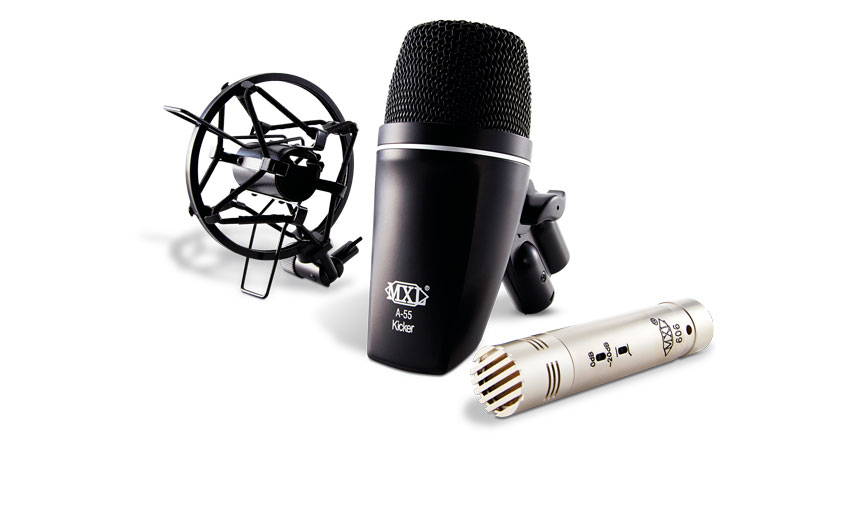MusicRadar Verdict
This kit makes a great introduction to quality drum microphones.
Pros
- +
Professional results. More versatile than you might think.
Cons
- -
You'll probably need to add some overhead mics to cover all bases.
MusicRadar's got your back
MXL's two-mic Essentials Drum Recording Kit makes a refreshing change In a market full of five and seven-piece mic kits. The emphasis here is definitely on quality over quantity.
Build
"MXL reckons that if you're entering the world of miking it's probably better to keep things simple"
While two mics might at first seem a meagre package, it's worth remembering that many factors determine the amount of mics that can be lavished on your kit (available stands and leads, the number of channels free in the mixing desk, even the disposition of the sound engineer).
MXL reckons that if you're entering the world of miking it's probably better to keep things simple while at the same time ensuring that you are equipped with the best mics that your budget allows.
The kit is made up of a pair of existing MXL mics - the A-55 Kicker (a large diaphragm dynamic mic suitable for bass drums and any other low-end instruments) and the 606 condenser (primarily a snare mic but versatile enough to cover other elements of the kit). Included in the package is a foam-lined flight case, a stand adaptor and a shockmount for the 606.
Hands On
While there are many established industry-standard bass drum mics out there, the A-55 has its own characteristics that make it recognisably different. Rather than opting for a completely natural rendering of the bass drum, the A-55 tweaks things subtly, bringing a slightly saturated feel to the sound; it's as though the low and top-end frequencies have been boosted through EQing. With minimal desk intervention, a fat, juicy bass drum sound - less air and more punch - is soon achieved.
Despite its petite dimensions, the 606 is super-sensitive and so is ideally suited for capturing delicate brushwork without having to up the input fader on the desk (and run the risk of drawing in other unwanted sounds).
When getting busy with a pair of 5Bs, a 20dB pad can be engaged to prevent the signal getting too hot. In both settings the snare sound is crisp and close-up vivid, with the drum's depth and breadth also carrying well.
Want all the hottest music and gear news, reviews, deals, features and more, direct to your inbox? Sign up here.
Both mics deliver professional results and won't require upgrading in the future. The addition of a couple of decent overheads would cover most miking situations, both studio-based and live.
